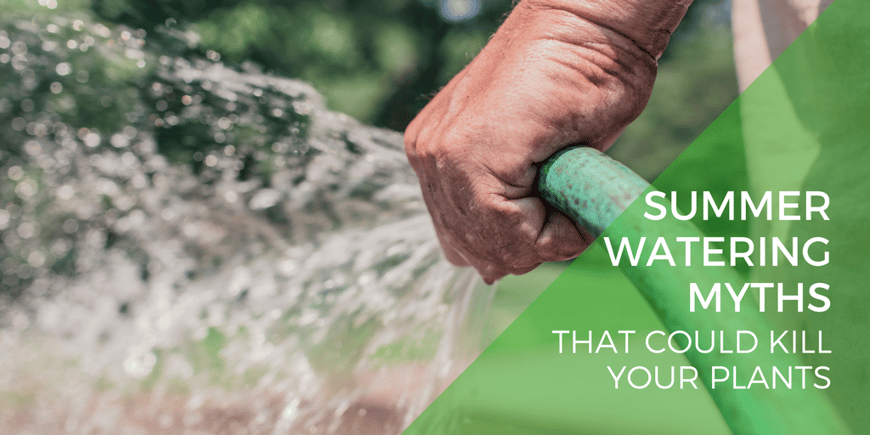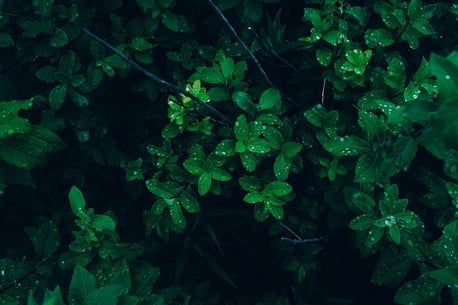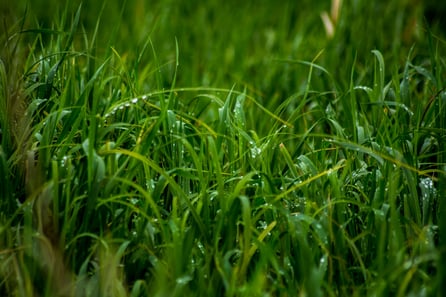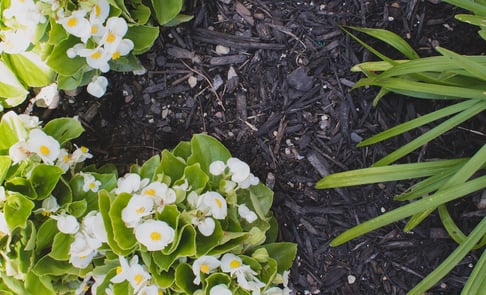Watering Plants in summer: Myths and Misconceptions That Will Kill Your Landscape

Summer is a wonderful season here in Northeast Ohio, from the shining shores of Lake Erie and the vibrant farmers markets that pop up, to the many fairs and festivals that pepper the region—there’s so much to see and do during this time of year. But it’s easy to neglect your landscape during all that excitement, and summer is when landscapes are neediest.
Here at Schill, we service hundreds of properties throughout all four seasons, but because the summer heat takes a special toll on plants, we decided to make this list of common misconceptions people have about watering plants during the summer months. Avoid making these mistakes to keep your plants healthy.
Watering in the evening
 It’s common knowledge that plants absorb water better when the harsh sun isn’t out. But while it’s definitely best to avoid watering during the midday sun, watering at night isn’t ideal either.
It’s common knowledge that plants absorb water better when the harsh sun isn’t out. But while it’s definitely best to avoid watering during the midday sun, watering at night isn’t ideal either.
This is because moisture, darkness, and heat are the three main components needed for plant diseases to thrive. If you water early in the morning, blades of grass, leaves, and other plant parts have a chance to dry in the sunlight, but after sunset, the water will often sit on your turf, trees, and shrubs overnight in the summer warmth. Conditions like these can lead to common turf diseases found in Northeast Ohio like Dollar Spot and Pythium Blight.
Water often
Just like suffering is believed to build character in humans, plants that are a little stressed turn out to be stronger over time. Annual flowers are the only plants that need to be watered daily, but many people water their trees, shrubs, and turf so often that when drought or disease do occur, they aren’t hearty enough to survive. Instead, it's always better to water less frequently and more thoroughly so water has time to penetrate deep to the root zone. Doing this prevents significant loss from evaporation.

Other people go so far as to let their turf go completely dormant in the drier months, which basically means letting the blades of grass die by not watering them over an extended period of time. Even though this does not typically harm the plant roots and turf will usually rebound after a decent amount of rainfall, dormant, dry grass can be an eyesore.
So, here at Schill, we don’t recommend that our property manager or HOA homeowner clients let you let their turf go dormant, but we do advocate watering as seldom as necessary.
Sometimes people water so often that they end up causing damage to their lawns. Turf that’s over watered, for example, will have roots that are shallow because the excess water drives out air from the soil, which the roots of all non-aquatic plants need to grow.
Want more irrigation and watering tips?
Check out our comprehensive landscaping guide.
Not letting mulch dry out
It’s not uncommon during this time of year to see mold and other types of fungi appear on mulch. This is often an easy fix and generally, when we see this here at Schill, we solve the problem by just scooping up the decaying matter.

But the problem is often exacerbated if the mold reaches surrounding plants. It’s important to remember that one of the reasons that mulch is laid is to insulate your plants from heat, keeping them cool and moist.
This helps your trees, shrubs, and flowers to be well-watered, but it can be a double-edged sword because mulch that keeps too much moisture close to roots can bring disease (as we said before, excessive moisture is one of the three components). Just like leaves and blades of grass need time to dry out, so does your mulch.
The Schill team is always keeping an eye out for mold and other signs of disease on the properties we service, but if you’re currently doing your own landscape maintenance, remember to make sure that your mulch is capable of drying out and is not trapping moisture.
Water all at one time
If you have an irrigation system installed, you might have realized that your sprinkler heads go off on different days. This is because your property is divided into zones, or areas that have similar watering needs. So, for instance, a bed of annuals might get daily watering, while trees and shrubs might only be watered once or twice per week.
While it might seem like a good practice to have a set watering day every week to make sure that everything gets watered regularly, by using a one size fits all approach you’re doing a disservice to your more delicate and heartier plants. The reality is that every plant is different and will have slightly different needs than its neighbors, so make sure you take that into consideration not when determining your watering schedule.
Need more summer landscaping tips?
Like with anything, consistency is key. Use the above advice to create a watering schedule that works best for your landscape and stick to it!
Have questions? The team at Schill Grounds Management is always available to chat about your summer landscaping needs and how to prepare your property for the fall and winter seasons to come. If you’d like a no-obligation consultation, feel free to contact us. Or, if you’d just like some more landscaping tips, check our FREE, interactive summer landscaping checklist below.
You May Also Like
These Related Stories
Is Your Landscape Winterproof? 5 Steps To preventing Winter Damage
Are Perennials The Best Option for Adding Color to Your Property?
5 Commercial Landscape Maintenance Musts For Winter Curb Appeal
Get Email Notifications
Your Trusted, Year-Round Commercial Landscaping Partner
Whether you're looking for transformative landscaping design and maintenance or reliable snow plowing and ice removal services, the Schill team is here to help

